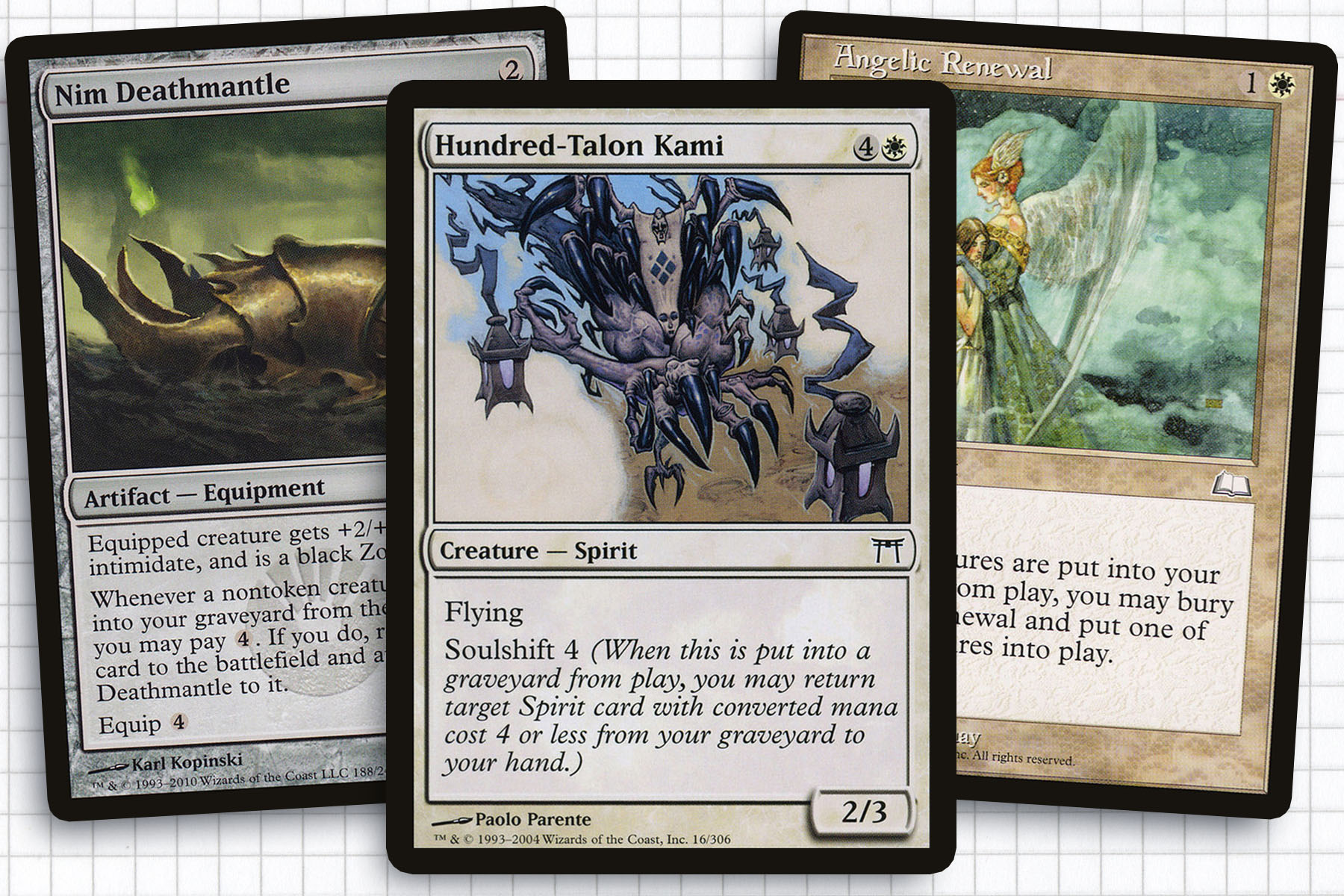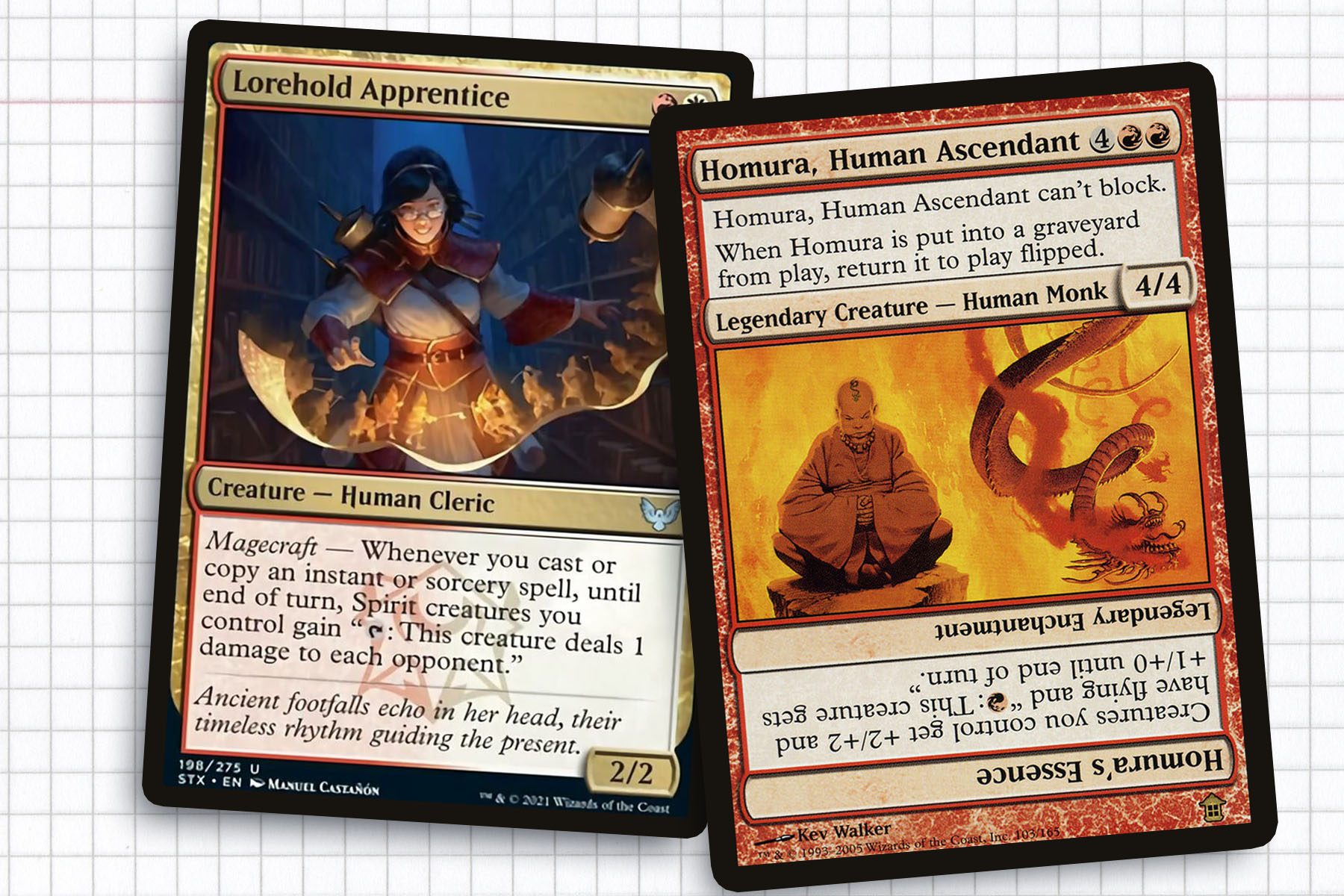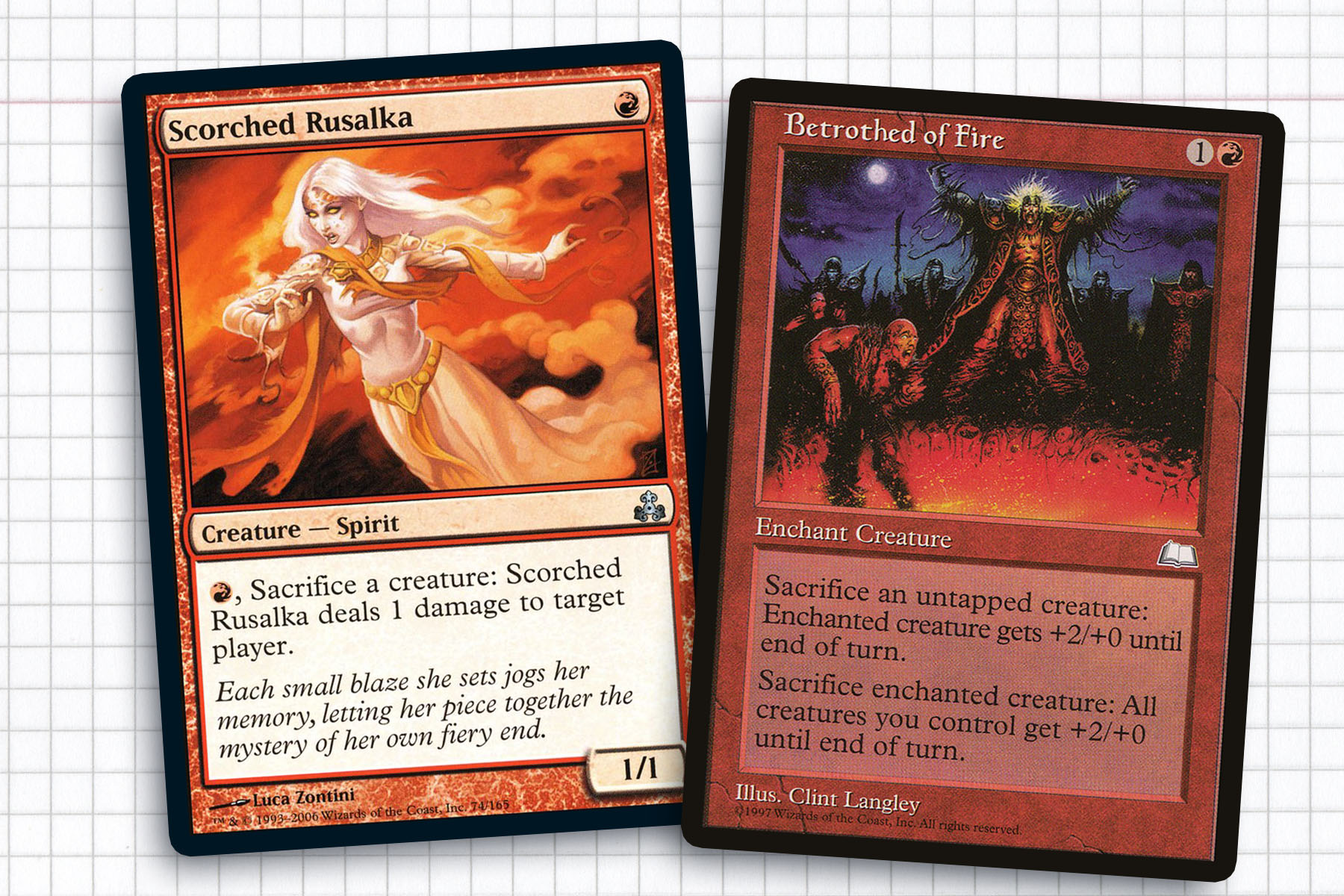I have recently found myself gravitating towards building two-color decks. Some of that comes down to allowing myself to build a deck with a certain level of restrictions while also coming with lower overhead on the price of the deck, as there are only so many dual lands I can run. The decks I’ve built helmed by Breeches & Malcolm and Vega have had such strong personalities during games. This is why Strixhaven had me relatively excited: it promised a focus on enemy pairs, and Wizards knows how monotonous some of those color combinations have become in Commander.
Boros—what many will be calling Lorehold for the foreseeable future—has always been a tricky color identity for me to grapple with. While there have been remarkable innovations over the last two and half years, like Feather, the Redeemed or Winota, Joiner of Forces, nothing has really spoken to my sensibilities enough for me to seriously consider building a deck. Enter Strixhaven: School of Mages.
After looking over the set and the accompanying Commander product, I think they’ve successfully brought some interesting new toys into Lorehold/Boros and Silverquill/Orzhov in particular. What excited me the most was Quintorius, Field Historian, who immediately joined my short list of decks to build. Regular readers will know that I typically like my generals to be open-ended, so I can flex some creative muscles and find my own build. I’m happy to say, Quintorius delivered with a deck that carves out a place for red-white spirits in the style of graveyard shenanigans unique to those colors.
Commander: Quintorius, Field Historian
Creatures: Angel of Flight Alabaster, Balefire Liege, Belfry Spirit, Celestial Kirin, Drogskol Cavalry, Eternal Dragon, Frostling, Grim Lavamancer, Hearth Kami, Homura, Human Ascendant, Hundred-Talon Kami, Jiwari, the Earth Aflame, Kami of Ancient Law, Kami of False Hope, Kami of the Honored Dead, Kami of the Palace Fields, Karmic Guide, Lorehold Apprentice, Luminous Angel, Nikko-Onna, Ore Gorger, Oyobi, Who Split the Heavens, Patron of the Kitsune, Phantom General, Pyrewild Shaman, Returned Pastcaller, Reveillark, Scholarship Sponsor, Scorched Rusalka, Skyfire Kirin, Storm-Kiln Artist, Torii Watchward, Venerable Warsinger, Yuki-Onna
Artifacts: Ashnod’s Altar, Boros Signet, Boros Locket, Herald’s Horn, Long-Forgotten Gohei, Minion Reflector, Nim Deathmantle, Sol Ring, Talisman of Conviction
Enchantments: Angelic Renewal, Betrothed of Fire, Genju of the Fields, Genju of the Spires, Goblin Bombardment, Molten Echoes
Instants: Blind with Anger, Boros Charm, Fiery Fall, Funeral Pyre, Path of Anger’s Flame, Quiet Purity
Sorceries: Breath of Life, Cathartic Reunion, Deafening Clarion, Faithless Looting, Resurrection, Sevinne’s Reclamation, Shenanigans, Triplicate Spirits
Lands: 4 Mountain, 8 Plains, Battlefield Forge, Clifftop Retreat, Command Tower, Drifting Meadow, Drownyard Temple, Flamekin Village, Forgotten Cave, Gods’ Eye, Gate to the Reikai, Hanweir Battlements, High Market, Hostile Desert, Inspiring Vantage, Mutavault, Naya Panorama, Needle Spires, Petrified Field, Rugged Prairie, Scabland, Secluded Steppe, Slayers’ Stronghold, Smoldering Crater, Stone Quarry, Sunhome, Fortress of the Legion, Wind-Scarred Crag

Back with Avengious
Quintorius, Field Historian is my kind of general. There is a direction that they inspire you to go in, but how you choose to remove cards from your graveyard and use Quintorius is completely up to you. While I ended up leaning into a creature heavy build, that was not always the case. In my early drafts of the deck, I was trying to make flashback and jumpstart spells do the heavy lifting, with my creatures mostly using unearth and embalm. For my own personal play style, I didn’t like where the builds were going; I simply didn’t feel like I could defend myself with only Quintorius and spirit tokens.
Of all the possible influences, spirits from the Kamigawa block and the soulshift mechanic proved to be the inspiration I needed to bring structure to how I want to manipulate my graveyard. With the right set up, it should be fairly easy to have creatures grabbing other creatures out of the graveyard either from enter or leaves the battlefield triggers. In truth there are laughably only five creatures with soulshift in the deck, but the mechanic was the jumping off point that got me to Angelic Renewal, Angel of Flight Alabaster, Karmic Guide, Nim Deathmantle, and Reveillark.
The deck puts creatures into the graveyard either through sacrifice outlets or normal game play, then brings them back to our hand or into play, while getting a spirit token from our general in the process. My hope is that this play pattern will allow us to play longer games, recovering fairly well from any wrath effects. This is in service to the idea of lowering our threat level, because who is going to worry about the player casting Kami of the Palace Fields? There is value in having a deck that on a perceived level is worse than the rest of the table. It allows you to get away with so much more, float under the radar, and become a threat only when you want that status.

Ghosts of the Past
Spirits as a tribe are admittedly not something that I have a strong investment with in the past. There is some flexibility to any tribe that is in all five colors, but limitations can lead to interesting choices. When tasked with creating a spirit tribal deck in the Lorehold colors, I found myself enjoying the different ways I could activate our general’s ability. White and red are fairly proficient at removing cards from the graveyard. Whether through Grim Lavamancer exiling cards to turn it into damage or white resurrecting creatures with Breath of Life, Resurrection, or Sevinne’s Reclamation, we should have the ability to pay relatively small costs to create one or more bodies at a time.
Of course no tribal deck is complete without a suite of anthem effects. Red-white is not flush with specific options for spirits, but at least we always have our general. Balefire Liege, Herald’s Horn, Long-Forgotten Gohei, Lorehold Apprentice, and to a lesser extent, Homura’s Essence, all offer enough augmentations to the tribe to raise its potential as a whole. Specifically, I think find Balefire Liege to be an underrated card: the pumps to creatures are great, the direct damage is a nice addition to most spells, and the life gain may not be deciding games, but is a free on any white spell.
While our general makes spirit tokens all on his own, it seemed appropriate to layer in a few cards that would creature spirit tokens as back ups for Quintorius. Nearing the top of our curve, we have Drogskol Cavalry, Luminous Angel, and Oyobi, Who Split the Heavens, who all should be able to provide us with an army to go wide for little to no opportunity cost. Add to that Triplicate Spirits, which will either cost little to cast when we’re doing well or help us rebuild after an unfortunate wrath effect.

Nothing without Sacrifice
The last suite of cards that I want to focus on today is admittedly an underrepresented within the current build of the deck. To ensure that we can be cycling our graveyard back into our hand or even better, the battlefield, we need sacrifice outlets. At this time I think we have a solid suite in Ashnod’s Altar, Betrothed of Fire, Goblin Bombardment, High Market, and Scorched Rusalka.
Once the deck is moving on all cylinders it should be reasonable that we can have resurrection fodder in our graveyard pretty easily. If we’re lucky, maybe we can even have a chain of soulshift creatures to generate two or three spirits with our general. If there is a weak point to my strategy, I think it falls here, as cost effective sacrifice options have not proven to be readily available for Lorehold yet.
Reflecting on this deck reminds me of the discussion going on about how as a community, we can best assess the power level of decks. And to some degree I’ve even seen a debate as to whether worrying about power level is even something that needs to be done. I fall on the side that there are valid reasons to make sure that the players you are playing with are there to try to achieve a similar kind of game, lasting as long as the table is looking for it to last. In my mind I want to get a solid seven to ten turns, which believe it or not, places them in the category of long games. This comes from a philosophy of building decks that don’t necessarily get into doing what they’re looking to do until later in the game anyway.
Yes, coming to the table with a bunch of cards from 2004 is going to get you a lot of laughs at the beginning, but I think that there is so much to be gained by being upfront about that. Let your opponents lower their metaphorical boxing gloves, then when they’re guard is down, that’s when you strike! There is so much to be gained from not trying to be the biggest, baddest threat at the table and that can start with power level.
We’ve lost over the last half decade the ability to allow ourselves to build subpar decks, the kind that land as a five or six out of ten on a power scale. A deck like the one I outlined today will not defeat an entire table by itself, but I don’t really care about that. I think that as a community we need to agree that one player is not responsible for lowering the life totals of every other player at the table, yet that’s how discussions seem to be framed. There is a concerted effort and there are politics that need to be considered, that is why moving forward, I want to make room for cards like Secret Rendezvous and Verdant Mastery. Foster some politics and let decks do cool things.
Ryan Sainio is a Graphic Designer who writes about EDH and the EDH community. He has been playing Magic: the Gathering since 7th Edition in 2002 and values flavorful and fun gameplay over competitively optimized decks.

